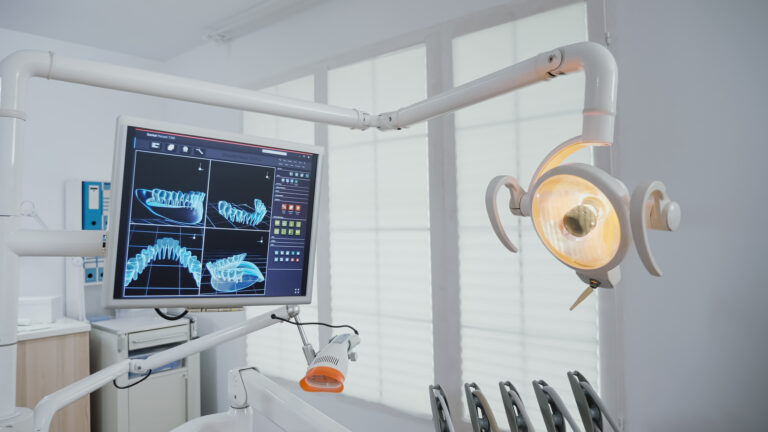How to use Distributor Networks to Grow Medical Equipment Sales?
Table of Contents
Introduction
In today’s competitive healthcare market, Medical Equipment manufacturers must reach every possible customer.
However, building a large sales team is costly and time-consuming.
This is where Distributor Networks become extremely valuable.
By partnering with strong distributors, small and mid-sized Healthcare MSMEs can quickly expand their market without heavy investment.
Distributors already have relationships with clinics, hospitals, and diagnostic labs.
They understand local markets and customer needs.
At the same time, more clinics are opening in Tier 2 and Tier 3 cities.
Demand for reliable Medical Equipment is growing fast. But many of these buyers prefer dealing with trusted local suppliers.
That is why setting up an efficient Distributor Network helps Healthcare MSMEs sell more equipment while reducing sales costs.
In this article, we will explain how you can successfully build and manage Distributor Networks to boost your Medical Equipment sales. Let’s get started.
1. Why Are Distributor Networks Important for Scaling Medical Equipment Sales in India?
For Medical Equipment suppliers in India, reaching clinics, hospitals, and diagnostic labs spread across thousands of cities is not easy.
This is where Distributor Networks play a key role, especially for Healthcare MSMEs that may not have large in-house sales teams.
First, India’s healthcare market is highly fragmented.
In Tier 2 and Tier 3 cities, many clinics prefer buying from local suppliers they know and trust. Distributors already have these relationships.
When you appoint a distributor, you tap into their existing customer base immediately.
Second, distributors handle logistics.
Moving heavy Medical Equipment like dental chairs, ultrasound machines, or sterilizers requires storage space, transportation, and safe handling.
Distributors manage inventory at the local level and deliver quickly to nearby clinics.
This reduces your need for warehouses in multiple locations.
Third, distributors offer local after-sales support.
If a machine breaks down, clinics want a technician to fix it fast. Distributors usually have trained staff who can provide installation, servicing, and basic repairs.
This increases customer satisfaction and loyalty.
Finally, working with distributors helps build market credibility.
When clinics see that you have an authorized distributor in their city, it builds trust.
Distributors act as your brand ambassadors and strengthen your company’s reputation in new regions.
In short, Distributor Networks allow Healthcare MSMEs to scale up faster, enter new markets at lower costs, and provide better service to clinics across India.
2. How Can Medical Equipment Manufacturers Identify and Onboard the Right Distributors?
For Medical Equipment manufacturers looking to scale, choosing the right Distributor Networks is a critical step.
The right distributor can help you reach new clinics, handle sales smoothly, and build a long-term presence in new regions. But how do you find the right one?
Let’s break it down.
1. Look for Existing Healthcare Contacts
A good distributor already has strong connections with local clinics, hospitals, and diagnostic labs.
They should know key decision-makers, purchase managers, and doctors.
This network helps you get faster entry into new markets without starting from scratch.
2. Check Service Capabilities
Selling Medical Equipment is not only about delivery. Distributors must be able to install, maintain, and service the equipment.
Ask whether they have trained technicians who can handle breakdowns, repairs, and basic troubleshooting.
This ensures your customers stay happy after purchase.
3. Evaluate Creditworthiness
Financial stability is very important.
The distributor should be able to buy inventory upfront or manage credit cycles without delays.
Check their past payment records, financial strength, and ability to handle your expected sales volumes.
4. Analyze Regional Coverage
You need distributors who can cover the areas you want to grow in.
For example, some may focus on Tier 1 cities while others specialize in Tier 2/3 cities.
Choose partners who are strong in your target regions.
5. Check Their Reputation
Speak to other suppliers, customers, or even competitors to get feedback.
A distributor’s market reputation says a lot about their reliability, customer service, and honesty.
6. Review Their Existing Product Portfolio
Distributors handling Medical Equipment should ideally not have conflicting brands that compete directly with your products.
However, it helps if they already sell complementary products like Medical Tools, consumables, or devices that your equipment pairs well with.
7. Set Clear Terms Before Onboarding
Once you shortlist a distributor, discuss clear terms on pricing, targets, territory rights, marketing support, warranty obligations, and payment schedules.
Put everything in writing to avoid confusion later.
By carefully following these steps, Healthcare MSMEs can build a strong Distributor Network that drives stable and profitable growth.
3. What Kind of Margin Structures and Incentives Work Best for Building Strong Distributor Partnerships?
For any Medical Equipment manufacturer, creating the right margin and incentive plan is key to keeping distributors motivated.
A good structure makes sure that both the manufacturer and the distributor earn profit, grow their business, and build long-term trust.
Let’s go step-by-step.
1. Set Standard Margin Ranges
In most cases, distributors expect a standard margin of 10% to 25% on Medical Equipment, depending on product type, price point, and service needs.
- For high-value equipment like dental chairs or surgical tools, margins may range from 10% to 15%.
- For smaller items like diagnostic kits, syringes, or handheld Medical Tools, margins may go up to 20% to 25%.
Margins must allow the distributor to cover their costs of storage, transport, staff, and servicing, while still leaving space for healthy profit.
2. Offer Volume-Based Discounts
To encourage higher sales, many manufacturers use tiered discount slabs.
- For example:
- Buy up to ₹5 lakh = 10% margin
- ₹5 lakh to ₹10 lakh = 12% margin
- Above ₹10 lakh = 15% margin
This motivates distributors to sell more and cross higher slabs to earn better margins.
3. Set Quarterly or Annual Sales Targets
Agree on realistic sales targets based on territory potential. Offer performance-based rewards for hitting quarterly or annual targets.
- Examples of performance rewards:
- Extra discount on next order
- Cash incentives
- Marketing support funds
- Foreign training trips or conferences
This keeps your Distributor Networks focused on actively promoting your Medical Equipment.
4. Create Exclusive Territory Agreements
For dedicated distributors, offer exclusive rights to sell your products in certain districts or states.
- Exclusive territories protect the distributor’s market and avoid price wars with other sellers.
- This builds long-term trust and loyalty.
5. Provide Promotional & Training Support
Apart from margins, give your distributors tools to succeed:
- Marketing materials
- Product demos
- Technical training
- Joint participation in medical trade shows
These help the distributor confidently promote your products to Healthcare MSMEs and clinics.
6. Allow Flexible Credit Terms (if safe)
Sometimes, extending 15 to 30 days of credit terms helps smaller distributors manage cash flow better.
However, credit should be given only after evaluating their payment history.
By using these simple but effective margin structures and incentives, manufacturers can build loyal and profitable Distributor Networks that actively drive sales.
4. How Should Medical Suppliers Train and Support Their Distributors for Better Sales Performance?
For Medical Equipment sales, good distributor training is not a one-time task.
It is an ongoing process that builds knowledge, confidence, and loyalty.
When your Distributor Networks understand the products well, they sell better, handle customer queries smoothly, and build stronger relationships with clinics and hospitals.
Let’s see how you can do this effectively.

1. Start with Detailed Product Training
Every distributor must fully understand your Medical Equipment. Organize hands-on product training sessions:
- Explain features, specifications, and USPs (Unique Selling Points).
- Show real-life usage examples.
- Explain safety instructions, maintenance needs, and common troubleshooting.
Use simple language so even non-technical sales teams can explain products to Healthcare MSMEs.
2. Provide Demo Kits and Samples
For complex equipment like dental chairs, autoclaves, or diagnostic devices, give demo units to key distributors.
- They can showcase these during clinic visits.
- Seeing the machine live often convinces buyers better than just brochures.
Small sample kits work great for Medical Tools like syringes, gloves, or disposables.
3. Share Easy-to-Use Marketing Material
Distributors need professional tools to promote their brand.
Provide them with:
- Brochures
- Product catalogs
- Price lists
- Comparison charts
- Buyer guides
- FAQ sheets
Use both print and digital formats. Simple explainer videos are also very helpful.
4. Conduct Regular Technical Support Sessions
Medical suppliers should schedule periodic refresher training for:
- New product launches
- Software updates
- Service and installation tips
- Handling customer objections
This keeps distributors updated and ready to answer any questions from clinics or hospitals.
5. Set Up a Fast Response Technical Helpdesk
If distributors face technical issues in the field, quick expert support builds trust.
- Create a dedicated phone or WhatsApp line.
- Assign technical service staff for problem-solving.
- Offer video call assistance for remote troubleshooting.
6. Run Co-Branded Marketing Campaigns
To support sales growth, offer joint marketing efforts:
- Local advertisements with distributor contact details
- Joint participation in healthcare trade fairs
- Co-branded WhatsApp or email campaigns
- Social media promotions targeting Healthcare MSMEs
This not only promotes your Medical Supplies but also boosts the distributor’s visibility.
7. Provide Business Development Support
Help distributors plan sales targets, explore new territories, and connect with more clinics.
Share leads where possible and encourage cross-selling of multiple product lines.
By investing in your distributors’ growth, you are actually expanding your own sales network.
Trained, well-supported distributors become your brand ambassadors in every corner of the market.
5. What Are Common Challenges Faced While Working with Distributor Networks and How to Manage Them?
When selling Medical Equipment through Distributor Networks, many suppliers face day-to-day problems.
Even though distributors help you grow, managing them needs careful attention.
Let’s go through the most common challenges and simple ways to handle them.
1. Delayed Payments
One big problem suppliers face is late payments from distributors.
- Distributors may delay payments due to their own cash flow issues.
- This can block your working capital and affect your production or deliveries.
How to manage it:
- Set clear credit limits and payment timelines.
- Offer early payment discounts to motivate faster payments.
- Regularly monitor outstanding balances.
- Use post-dated cheques or bank guarantees for large orders.
2. Stock Hoarding or Overstocking
Sometimes distributors buy more than they can sell, thinking of future demand.
- This leads to unsold inventory sitting idle.
- Products may expire, especially for Medical Supplies like gloves, syringes, and disposables.
How to manage it:
- Encourage realistic ordering based on sales history.
- Provide smaller, frequent restocking options.
- Use sales data to forecast better and guide distributor purchases.
3. Price Undercutting Between Distributors
Some distributors may sell below the agreed price to win orders.
- This damages your market pricing.
- Creates unhealthy competition between your own partners.
- It may reduce your brand value.
How to manage it:
- Set uniform Minimum Selling Price (MSP) policies.
- Monitor online platforms for undercutting.
- Penalize repeated violators as per the agreement.
- Promote a “market-protection” system where nearby distributors respect each other’s territories.
4. Poor Service Quality to Clinics and Hospitals
Not all distributors invest in proper after-sales service or technical support.
- This frustrates clinic buyers.
- Complaints come back to you as the brand owner.
- Your reputation suffers.
How to manage it:
- Make service training mandatory for all distributor teams.
- Provide technical support numbers for joint troubleshooting.
- Monitor service call closure times.
- Conduct periodic service audits for each distributor.
5. Inconsistent Product Knowledge
Sometimes, distributor sales staff lack updated product knowledge.
- They may fail to explain features properly to healthcare buyers.
- This reduces conversion rates for high-value Medical Equipment.
How to manage it:
- Offer regular refresher training (monthly or quarterly).
- Share short video tutorials for new product launches.
- Create easy-to-understand product comparison sheets.
6. Territory Overlap and Conflict
Occasionally, two distributors may compete for the same buyer in nearby areas.
- This creates confusion for customers.
- It affects trust between the supplier and distributors.
How to manage it:
- Assign exclusive territories wherever possible.
- Define clear boundaries in distributor agreements.
- Mediate disputes quickly to prevent long-term friction.
7. Communication Gaps
Sometimes distributors do not update you about market demand, competitor moves, or customer complaints.
- You lose valuable field insights.
- Market trends shift without your knowledge.
How to manage it:
- Conduct monthly distributor meetings or video calls.
- Use simple reporting formats (Excel, Google Forms).
- Create a WhatsApp group for quick updates.
By proactively handling these common issues, Medical Equipment suppliers can build a healthy, long-term Distributor Network that fuels consistent sales growth across Healthcare MSMEs.
6. How Can CRM and Digital Tools Help Manage and Monitor Distributor Performance?
Once your Distributor Network grows, it becomes harder to track everyone manually.
Distributors are spread across multiple regions, each handling different buyers, volumes, and payments.
This is where digital tools and CRM (Customer Relationship Management) systems become very helpful for Medical Equipment suppliers.
Let’s break it down simply.
1. Centralized Distributor Database
A good CRM keeps all distributor details in one place.
- You can store contact info, locations, agreements, pricing, and credit limits.
- Whenever you or your sales team need information, it’s available quickly.
- No need to search through spreadsheets, WhatsApp chats, or paper files.
2. Sales Dashboards for Daily Monitoring
CRMs provide real-time dashboards that show:
- How much each distributor has sold.
- Which products are moving fast or slow?
- How much stock is each distributor holding?
- Which territories are performing better than others?
This makes decision-making faster.
You can adjust production, stock allocation, or marketing efforts based on actual data.
3. Automated Order Tracking
Many CRMs or sales apps offer integrated order management.
- Distributors can place orders directly in the system.
- You can track order status from processing to shipping to delivery.
- This reduces errors and saves time on back-and-forth calls.
4. Payment and Credit Monitoring
Cash flow is a common challenge with Distributor Networks.
- CRM can track outstanding payments.
- You get alerts on overdue invoices.
- Credit utilization reports show which distributors may be overextending their limits.
This helps prevent financial problems before they grow.
5. Performance Reviews Made Easy
Every month or quarter, you can review distributor performance:
- Total sales volume.
- Achievement vs target.
- Service response times.
- Payment discipline.
With CRM reports, these reviews are fact-based, not emotional. This builds healthy accountability across your network.
6. Faster Communication and Training
Modern CRM tools allow you to:
- Send product updates, price revisions, or training materials directly to all distributors.
- Share documents like catalogs, sales brochures, and video demos.
- Avoid miscommunication by ensuring every distributor receives the same information.
7. Forecasting and Planning Support
When all distributor data is in one system, you can forecast:
- Which products will be in higher demand next month?
- Which regions need more stock allocation?
- Where new sales support or marketing efforts are required.
This helps you plan better for raw materials, production, and logistics.
Some simple CRM or digital tools that medical suppliers can start with:
- Zoho CRM (affordable and easy for MSMEs).
- Salesforce (for larger, more advanced setups).
- Marg ERP with distributor modules.
- Google Sheets is linked to simple dashboards.
- WhatsApp Business API for quick order and support coordination.
In short:
Digital tools and CRM help you reduce manual work, improve transparency, and build stronger distributor partnerships.
In 2025, every serious Medical Equipment supplier aiming to grow their Healthcare MSME customer base should start using these systems to stay competitive.
Conclusion: Distributor Networks Are the Growth Engine for Medical Equipment MSMEs
In India’s fast-expanding healthcare sector, Medical Equipment manufacturers need strong Distributor Networks to reach thousands of clinics, hospitals, and labs, especially in Tier 2/3 cities.
With the right selection of distributors, clear incentive models, continuous training, and reliable digital tools, even small Healthcare MSMEs can scale their sales nationwide.
However, building these networks takes planning.
You need to screen potential partners carefully, monitor their sales, support them actively, and ensure timely payments.
Smart use of CRM systems, order tracking software, and regular performance reviews will help manage distributor relationships efficiently.
In 2025, those suppliers who combine traditional distribution strengths with modern digital management will have a clear competitive advantage.
Whether you’re starting with 5 distributors or managing 50, now is the time to invest in systems that bring stability, visibility, and growth to your Medical Equipment business.
The Following Video Might be Helpful for You
Also Read,
- The Ultimate Guide: Working Capital Loans for Small Business (MSMEs) in 2025
Understanding the Impact of Payment Terms on Working Capital for Clinics
How Poor Inventory Management Hurts Working Capital in Pharmacies.
Want a Better Business Credit Score? Small Pharmacies Can Now Use UPI & Cards to Build It
Want a Better Credit Score? Use Small Daily Payments to Build Your CBIL (For Clinics & Pharmacies)
Case Study:How a Small Clinic Improved Its Working Capital Management





